You can judge a GPS running watch by how it copes on an epic, challenging, ultra distance run through mixed terrain. Good watches will handle the big demands; bad watches will DNF under the pressure. We wore the Suunto Race (stainless steel version) on a non-stop 28 hour 15 minute run of the Cleveland Way national trail, clocking a whopping 110.8 miles through moorland, hills, thick forest and coastal paths, and it performed like a dream.
Using the “Ultra” GPS mode, the watch tracked our quadruple marathon very accurately, and even had 65% battery left at the finish line. Remarkable stuff. Consequently, we're convinced the Suunto Race is a superb watch, perhaps the best yet from this well-respected Finnish brand.

It has phenomenal battery life, easily capable of out-lasting even the longest of long runs. The large 1.43” AMOLED screen is crisp and bright, and displays information fantastically, making other watches look monochrome and out-dated. And at £389 it’s excellently priced, offering premium performance for a mid-range price point, saving £100s compared to top-tier models from other brands.
The catch? At 83g it’s pretty darn heavy, and the chunkily-thick design can feel bulky and clunky on the wrist, and a little bouncy and unstable if you have a dynamic arm swing. Some runners will hate this sensation and find it uncomfortable; others won’t be bothered by it one iota. But if you’re after something light and minimalist, certainly look elsewhere.
 LFTO
LFTOPros
- Superb AMOLED screen
- Excellent battery life
- Impressive price
- GPS accuracy
Cons
- Heavy
- Thick and chunky on the wrist
- No onboard music
- No contactless payments
| Weight | 83g |
| Battery life | Up to 50 hours (performance mode) or 200 hours (tour mode). Or 26 whole days without GPS or heart rate. |
| Waterproof | 10ATM |
| Materials | Stainless Steel |
| Screen size | AMOLED, 466x466 resolution, 1.43” |
Ultimately, however, this is an excellent GPS watch that wowed us during our test runs. Combining top-notch battery life and impeccably accurate tracking with a super-crisp screen and intuitive user-interface, and all at a surprisingly affordable price, the Suunto Race is an excellent choice.
Design, Screen and User Interface

The screen of the Suunto Race is a real showstopper – bright, crisp, well-sized and multicoloured with a beautiful, almost sexy display. It feels every bit a screen worthy of the 2024 tech era, as if the Suunto Race is in Ultra HD while other watches lag behind in 1980s analogue black and white fuzziness. It’s a big selling point of the watch.
Sized 1.43” wide, the AMOLED (active-matrix organic light-emitting diodes) screen is housed within a 49mm stainless steel bezel, although you can opt for a titanium version (£479, 69g). The screen is touchscreen compatible, but you also get three hardware buttons on the right-hand side of the watch: two standard buttons and one rotating crown.
The latter makes scrolling up and down through options easy, and the all-round user-interface is intuitive and simple to grasp. We particularly liked the “Control Panel”, which made accessing certain settings and features very quick, while the ease of adjusting battery power modes and other settings within the sport screen (just before clicking start on your activity) was very well designed. Compared to some other watches, which have fiddly screen menus and are confusing to navigate (why can I never find the setting I’m looking for?), the Suunto Race’s user interface is far superior.
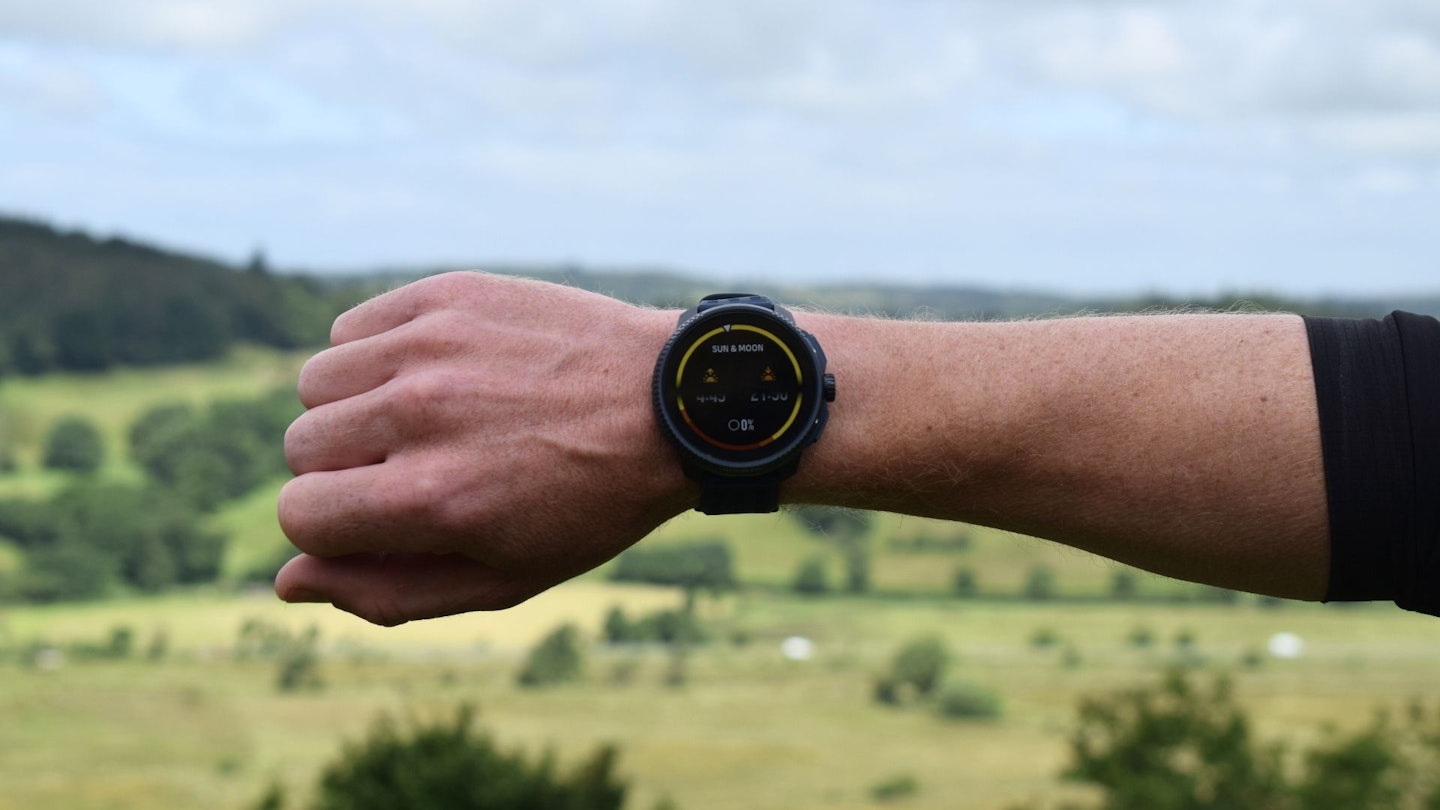
Back to the AMOLED screen. There’s no doubt it’s a first-rate feature and far crisper than a basic screen, but the apt question to ask yourself is - do I really need it? Some runners will love the vivid display; others will see it as all rather flashy and gaudy, and an unnecessary luxury. Ultimately the brightness of the screen won’t alter the information displayed and won’t positively impact your training, fitness and progress, so it’s definitely not an essential feature. We absolutely love it, but you may think differently. It’s something to mull over carefully.
GPS Accuracy
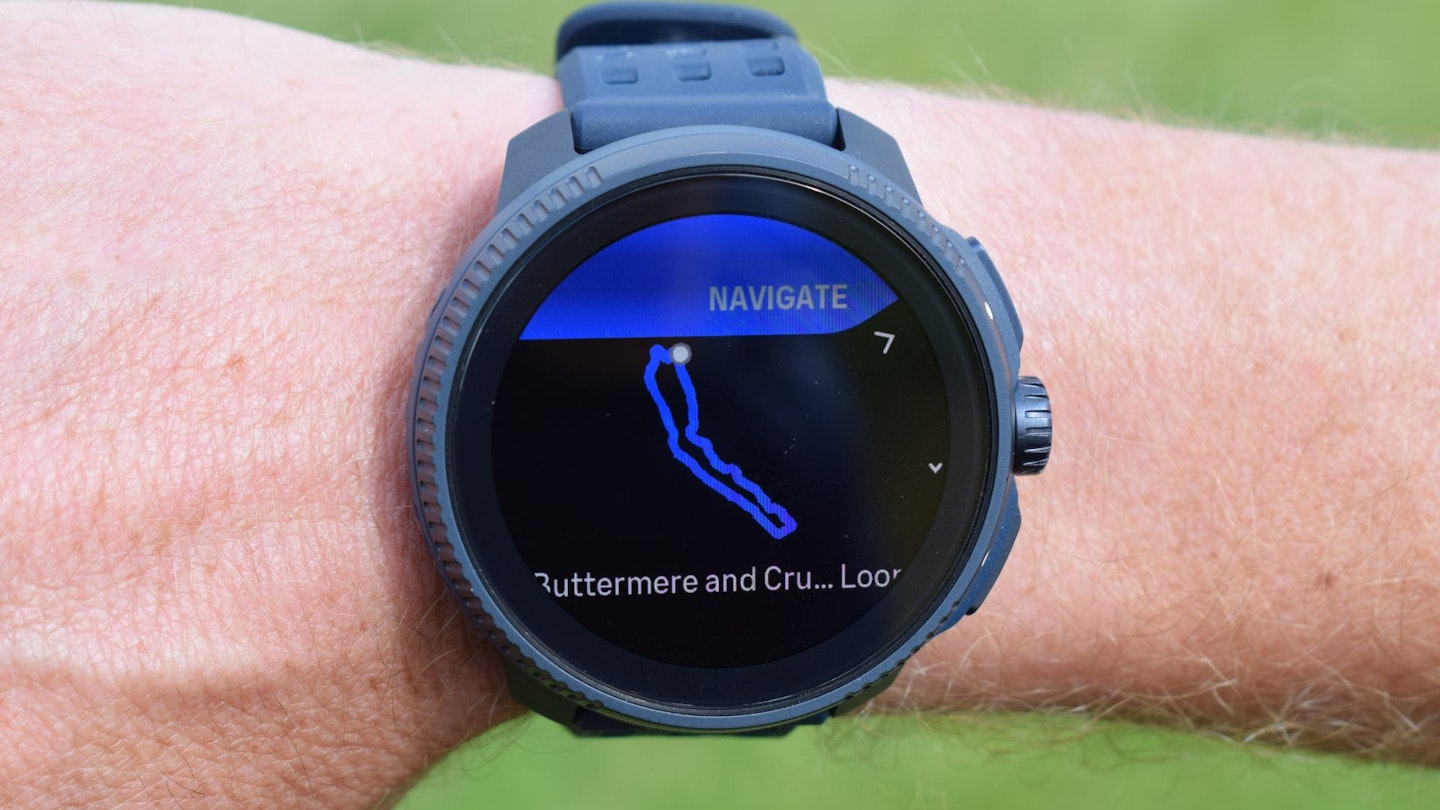
All of the features you need to maximise GPS accuracy are available with the Suunto Race. You get a dual-frequency (multi-band) GPS chipset, and the watch can connect to 32 satellites simultaneously from 4 different systems, with access to GPS, GLONASS, Galileo, QZSS and Beidou all available.
During several shorter runs the Suunto Race appeared to track distance and pace accurately, with no problems or issues to note. But it was on the 111-mile Cleveland Way that we were most impressed with its GPS accuracy. Over 28 hours of non-stop movement, the watch accurately tracked our run across challenging terrain, including thick tree cover and undulating hilly ground. We know the watch tracked accurately because it matched very closely the distance of the route I plotted on the OS Maps and Outdooractive navigation apps when planning my adventure. By contrast, an old GPS running watch we used at the same time massively over-tracked our run, clocking 17km further than expected – a big inaccuracy.
Weight and Size
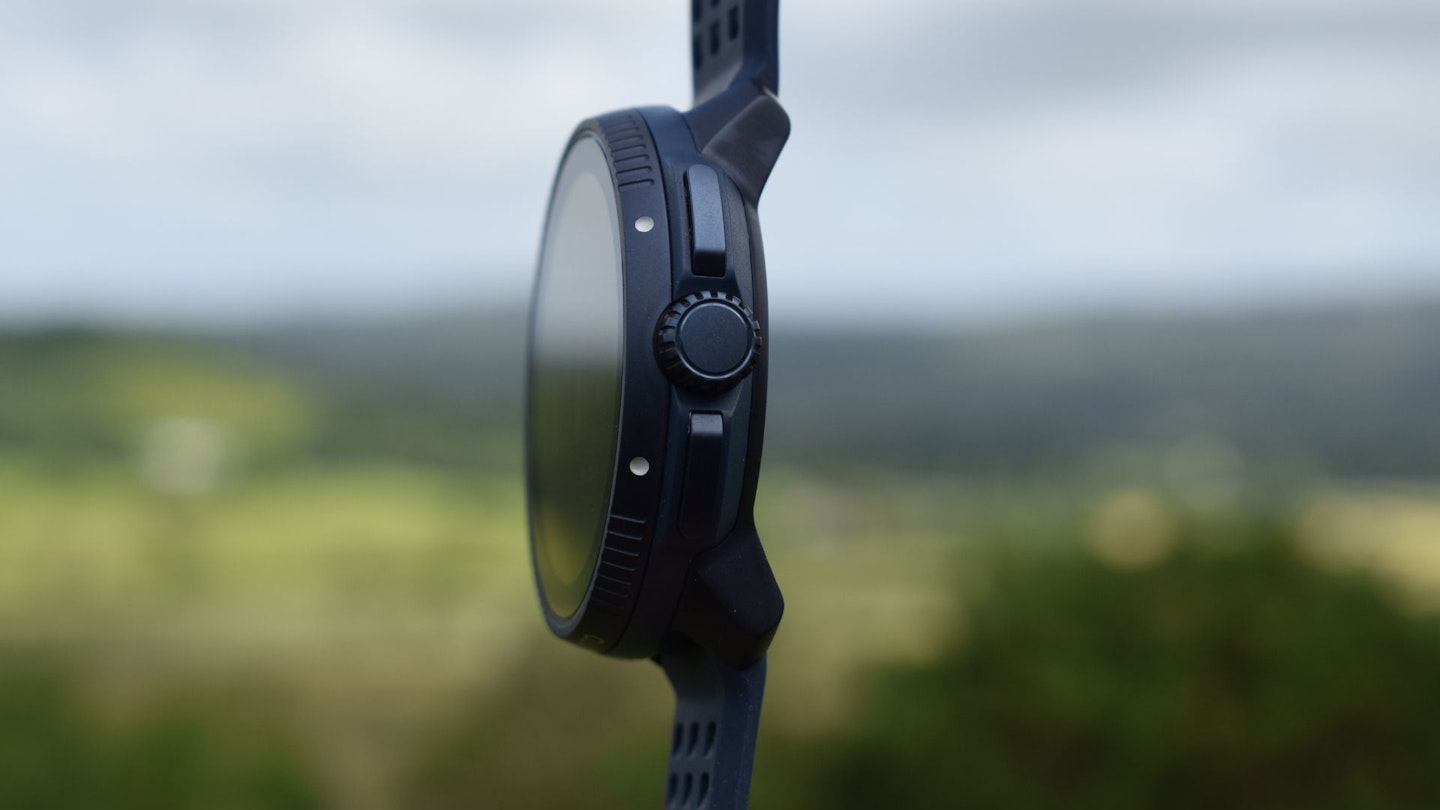
This is where the Suunto Race will polarise opinion. At 83g it is one of the heaviest GPS running watches out there, clocking in at more than double the weight of the Coros Pace 3 (39g), for example. It is rather thickset and chunky too, with a 13.3mm depth and a sizeable 49mm bezel width.
Will you love or hate this approach? It all comes down to personal preference. We felt the sparkling screen and impressive battery life were adequate recompense for the added weight and size. But other runners may find the Suunto Race way too bulky. It’s far from ideal for thinner, smaller wrists and, arguably, for some runners the fit will feel cumbersome, weighty and sluggish.
Battery Life

The Suunto Race has excellent battery life – we were very impressed with it. As mentioned above, we used the watch for over 28 hours non-stop, tracking a 111-mile run, and it only used up 35% of the battery. So there’s certainly a lot of juice underneath the Suunto Race’s aesthetic exterior.
In terms of official battery stats, Suunto states you get 26 days in standby mode (with no GPS and no heart rate tracking), or 12 to 16 days in smartwatch mode (with 24/7 tracking and mobile notifications, but no GPS). When using GPS, the Suunto Race has four colour-coded battery power modes: performance (green, up to 50 hours), endurance (yellow, up to 65 hours), ultra (orange, up to 90 hours) and tour (red, up to 200 hours), depending on your exact settings.
Performance mode offers the most accurate GPS tracking, but burns the battery the fastest. Tour mode delivers up to a whopping 200 hours, but naturally will be a less accurate trace-log. Choosing these different settings before each run is super-easy, and it’s an excellent feature.
Water-Resistance
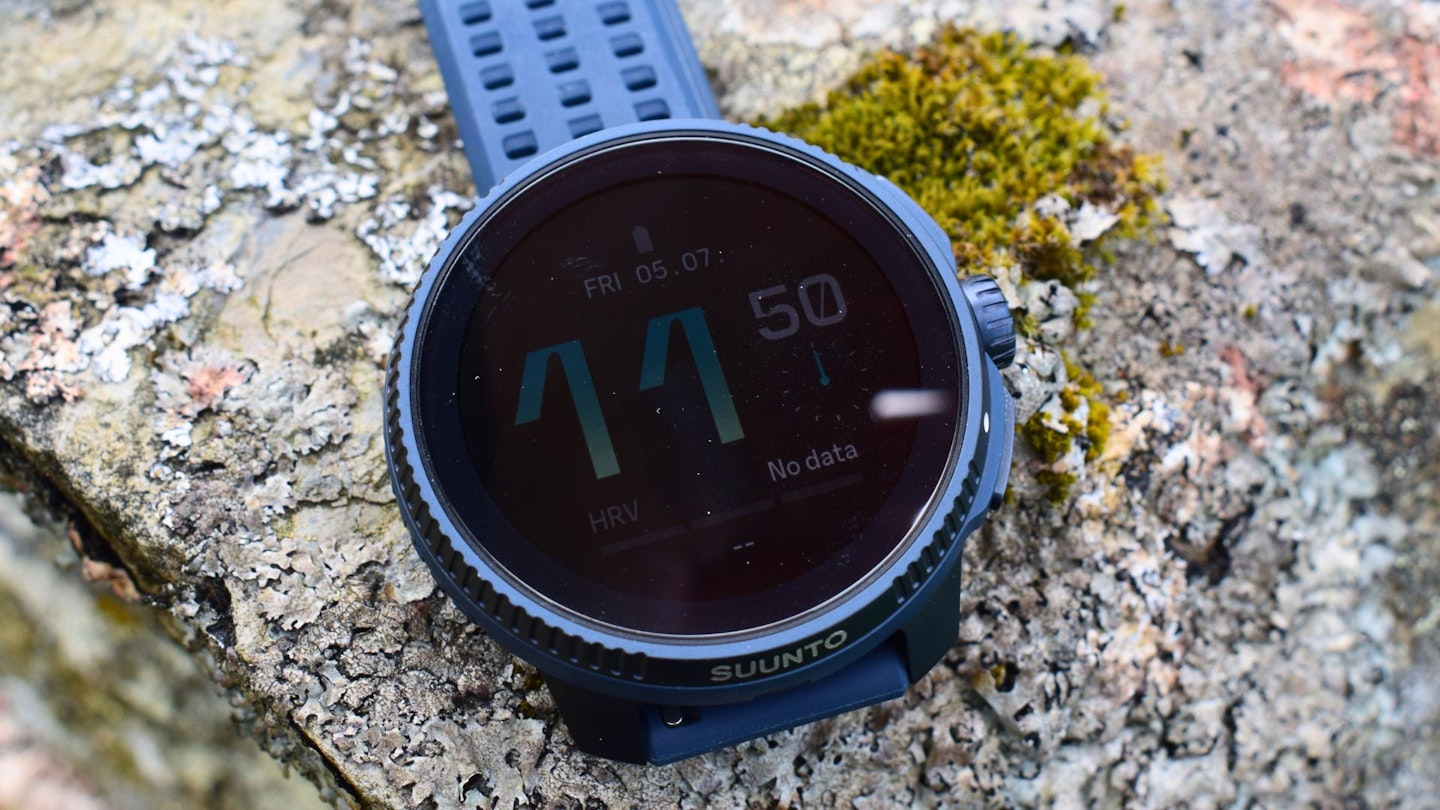
The Suunto Race has a 10ATM rating, which means it can withstand pressures equivalent to a depth of 100 metres under water, and is suitable for use in rain, swimming pools, showering at home and activities such as snorkelling.
We used the Suunto Race for several swims at our local gym, recording my workouts using the swimming mode. This worked by tracking the number of pool lengths completed, rather than using GPS, and it did the job fine. I had no issues with using the watch under water and the waterproof rating appears to be accurate.
Navigation and Mapping
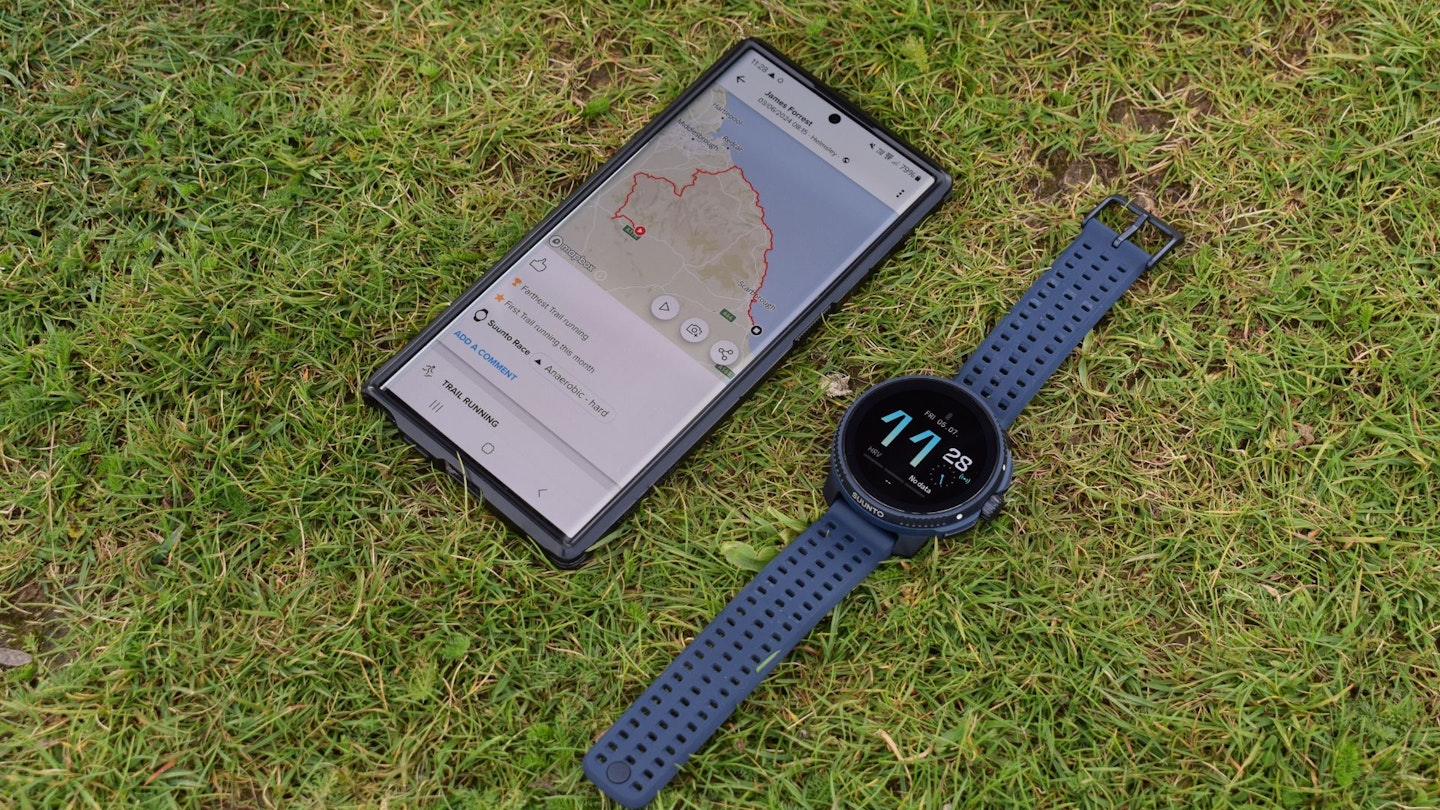
Using the Suunto app, it’s simple and straight forward to upload a GPX route and save it to your watch. You can then select the route under the ‘navigation’ tab and then follow the trace during your run. I tested this feature during an 18km trail run around the twin lakes of Crummock Water and Buttermere, and it worked well. The map is basic but you can easily follow it, and the wide, AMOLED screen displays the mapping far better than most other watches. You can also set the watch to give turn-by-turn notifications, including by voice if using headphones.
There are loads of other navigation features available with the Suunto Race, including offline mapping (which is a little fiddly to set up but works well), navigating to points of interest, and a “find back” feature (returning via a breadcrumb trail to your start point). You also get an in-built compass and altimeter.
Running: Training, Coaching, Heart Rate and App
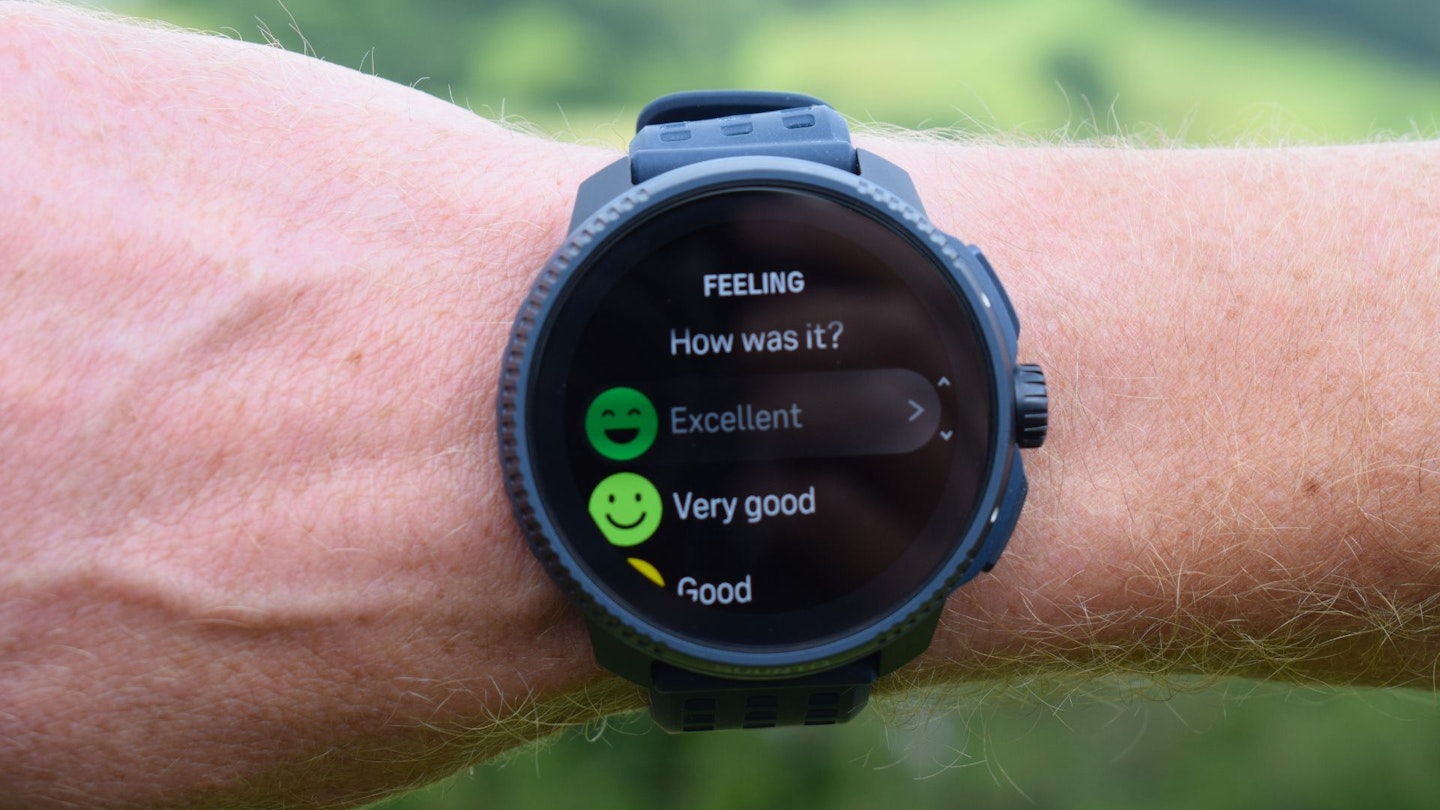
Like all of the best GPS running watches, the Suunto Race – in conjunction with the Suunto app – will bombard you with a truckload of scientific data and metrics about your workouts, as well as offer coaching recommendations on how to level-up your training and when and for how long to recover. It all works well and you can pick and choose what to focus on and what to ignore.
Our favourite features included: setting personalised intensity zones, based on heart rate and pace; and using the clever interval mode, which enables you to set the number and length of repetitions (time or distance), and number and length of recoveries (time or distance).
Other Features
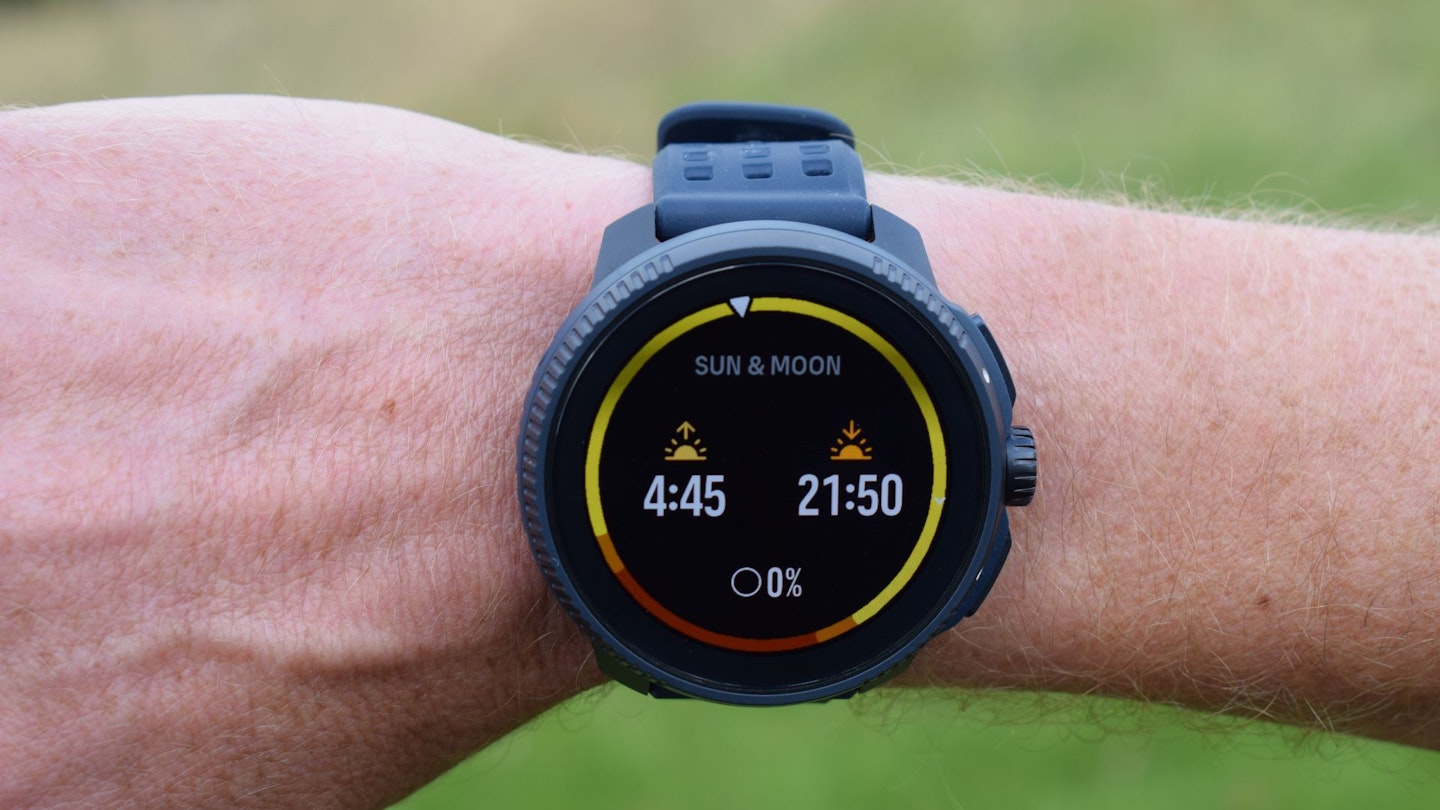
Most other features you’d expect are present with the Suunto Race. The watch face is completely customisable, including with several useful “widgets” displaying various insights and data. You get an integrated flashlight, timer and alarm. You can control music playing via your phone, receive social media, text and call notifications, and track “lifestyle-y” metrics such as step counts and sleep. There are, however, two main omissions – you can’t download music directly to the Suunto Race, and the watch doesn’t support contactless payments.
Verdict
An excellent watch with superb battery life, accurate GPS tracking, surprisingly low price-point, and a beautifully crisp AMOLED screen – but it’s heavy and chunky.
Shop this product
How we tested the Suunto Race

Mountain man and destroyer of ultramarathons, James Forrest, was your zealous tester for the Suunto Race watch. James writes regular features and route guides for Trail and has been one of our main gear testers for the last few years. He is based on the edge of the Lake District so when he isn’t off on his latest crazy adventure or challenge, he’s walking in his local fells.

